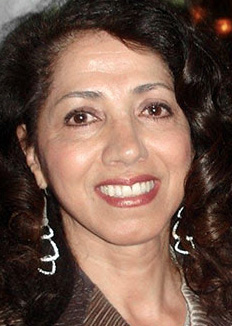


|
||
|
||
Global leaders gathered in New York at the Summit of the Future and adopted the “Pact for the Future” on Sunday 22nd September.1 This is a historic milestone as the Pact is the first international agreement aimed at securing a better digital future for all, grounded in human rights.
The recent adoption of the “Pact for the Future” at the United Nations General Assembly marks a significant step toward revitalizing multilateral cooperation in an increasingly fragmented world. Endorsed at the Summit of the Future, the agreement represents a comprehensive framework aimed at addressing global challenges such as climate change, technological risks, conflicts, inequality, and poverty. The Pact underscores a renewed commitment to global unity, bringing together world leaders, international organizations, and stakeholders to confront the critical issues facing humanity.
The Pact for the Future outlines 56 key actions targeting poverty eradication, climate change mitigation, gender equality, and peace promotion.2 At its core, the Pact aims to reform and reinvigorate the multilateral system, making it more inclusive, responsive, and aligned with contemporary global dynamics. UN Secretary-General António Guterres captured the spirit of the Pact, declaring, “We are here to bring multilateralism back from the brink.”3 The document also introduces much-needed reforms to the UN Security Council, addressing the underrepresentation of regions like Africa, Asia-Pacific, and Latin America, and marking the first multilateral push for nuclear disarmament in over a decade.
However, the Pact is legally non-binding, leaving the effectiveness of the proposed reforms heavily on the voluntary actions of member states. This voluntary nature underscores the broader challenge of translating multilateral agreements into tangible outcomes, a recurring issue in international diplomacy.
The adoption of the Pact was not without controversy. Russia, along with countries such as Belarus, North Korea, Iran, Nicaragua, and Syria, proposed amendments that sought to limit the Pact’s scope by emphasizing non-interference in domestic affairs.4 These amendments were overwhelmingly rejected, highlighting a divide between nations committed to broader international cooperation and those seeking to assert national sovereignty over global governance.
NATO’s active participation in the summit, highlighted by remarks from Dylan White, Head of the NATO Liaison Office to the United Nations, underscores the alliance’s commitment to a rules-based international order and multilateral cooperation.5 NATO’s engagement reflects its evolving role in global governance, moving beyond traditional defense to broader discussions on international security and governance, demonstrating that collective security organizations can play a pivotal role in the quest for a more peaceful and stable world.
One of the most ambitious components of the Pact is the Global Digital Compact, which aims to harness digital technologies to support sustainable development and inclusive global progress. The Compact sets forth five key objectives: closing digital divides and advancing Sustainable Development Goals (SDGs); inclusive digital economy; fostering a human-centric digital space; advancing responsible, equitable, and interoperable data governance; establishing international governance standards for Artificial Intelligence (AI) and emerging technologies.
By emphasizing responsible technology use, the Pact seeks to mitigate the potential dangers of digital advancements, such as the militarization of AI, cybercrime, and technology-facilitated violence. Moreover, the Declaration on Future Generations within the Pact focuses on protecting the rights and interests of young people, promising to include them in decision-making processes. This is a critical step toward ensuring that future generations are not only considered but actively involved in shaping the world they will inherit.
The Pact for the Future also calls for strengthening the UN’s role in maintaining international peace and security. It advocates for clearer mandates and strategies for peace operations, improved safety measures, and early transition planning with host countries. Emphasizing preventive diplomacy and upholding international law, the Pact seeks to address emerging threats such as maritime security, terrorism, and nuclear proliferation. These steps reflect a strong commitment to making peace operations more adaptable and effective in a rapidly changing global landscape.
However, while the Pact for the Future champions global cooperation and presents an ambitious vision, its approach to the SDGs is a glaring area of concern. The Pact acknowledges the uneven and insufficient progress toward the SDGs, highlighting that many goals are either moving too slowly or have regressed below their 2015 baselines. Issues like poverty, hunger, and inequality continue to rise, and despite the Pact’s call for accelerated action, there remains a significant implementation gap between stated commitments and real-world progress.
The financing gap faced by developing countries further complicates the pursuit of the SDGs. While the Pact outlines potential financing mechanisms, doubts remain about their effectiveness. Without robust accountability frameworks and concrete enforcement mechanisms, the risk of repeating past failures looms large. The Pact’s broad and sometimes vague proposals lack the specificity needed to drive tangible change, particularly in addressing deeply rooted systemic issues like inequality and power imbalances.
The adoption of the Pact for the Future represents a critical and much-needed reaffirmation of global unity and multilateralism. The involvement of NATO and other international bodies highlights a shared commitment to confronting global challenges through collective action. Yet, while the Pact inspires hope for a renewed era of cooperation, it falls short in its approach to the SDGs, leaving much to be desired in terms of accountability and concrete outcomes.
As the world navigates an era of complex, interconnected crises, the Pact for the Future serves as both a call to action and a reminder of the work that remains. Its success will ultimately depend on the international community’s ability to translate its ambitious promises into meaningful actions that make a real difference in the lives of billions of people worldwide. The road ahead is fraught with challenges, but with sustained global cooperation, there is potential to achieve a more just, secure, and sustainable future for all.
Sponsored byRadix

Sponsored byDNIB.com

Sponsored byIPv4.Global

Sponsored byVerisign

Sponsored byWhoisXML API

Sponsored byVerisign

Sponsored byCSC
